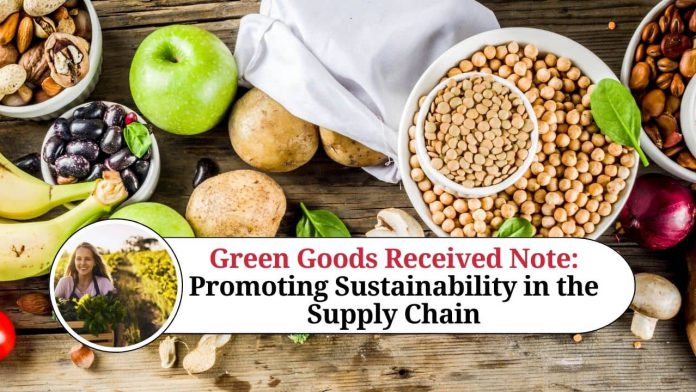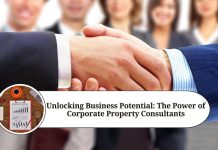Green Goods Received Note (GRN): An Overview
A Goods Received Note (GRN) is a document that confirms the delivery of goods from a supplier to a buyer. The GRN includes details such as the description and quantity of the goods received, the date of delivery, and the supplier’s name and address. A Green Goods Received Note (GRN) is a GRN that has been adapted to include information related to sustainability and environmental impact.
In this blog, we will explore the concept of GRN and its importance in the supply chain, the significance of the “green” element in a GRN, and the key components of a GRN.
The Importance of Goods Received Note (GRN) in the Supply Chain
A GRN is an essential document in the supply chain as it helps in ensuring that the correct goods have been received, and the quantities are accurate. It provides a record of goods received, which is useful in reconciling deliveries with orders and invoices. Additionally, the GRN enables a buyer to identify any discrepancies between the ordered goods and the delivered goods, helping to avoid unnecessary payments and disputes with suppliers.
The “Green” Element in a GRN
As the world becomes increasingly conscious of environmental sustainability, businesses are making efforts to reduce their carbon footprint and promote sustainable practices. A Green Goods Received Note (GRN) is an extension of this effort. A GRN may be considered green if it includes information on environmentally friendly practices related to the delivery of goods, such as reducing packaging waste or using sustainable modes of transportation.
The inclusion of green elements in a GRN can help businesses identify areas where they can reduce their environmental impact and promote sustainable practices within their supply chain. This, in turn, can lead to improved environmental performance, reduced costs, and improved brand reputation.
Key Components of a Green Goods Received Note (GRN)
- Date of delivery: The date the goods were received.
- Supplier details: The name and address of the supplier.
- Description of goods: A clear and concise description of the goods received.
- Quantity of goods: The quantity of each item received.
- Quality of goods: Details of any damage or quality issues with the goods received.
- Sustainability-related information: Information related to sustainable practices such as reducing packaging waste, using sustainable modes of transportation, or environmentally friendly disposal methods.
- Signatures: Signature of the person who received the goods and the supplier’s representative who delivered them.
In addition to the key components mentioned above, a Green Goods Received Note (GRN) can also include information on the carbon footprint of the delivery, such as the distance traveled, fuel consumption, and emissions. This information can be useful in identifying opportunities to reduce carbon emissions and improve supply chain efficiency.
A Green Goods Received Note (GRN) can also be used to track the source of the goods received and ensure that they meet specific environmental or ethical standards. For example, a GRN may include information on the origin of the goods, the supplier’s certification or accreditation status, and the environmental impact of the production process.
Implementing a Green Goods Received Note (GRN) can be a valuable step towards a more sustainable supply chain, but it is important to ensure that it is integrated into existing processes and procedures. This may involve training staff on the importance of sustainability and providing clear guidelines for the information that should be included in the GRN.
Apart from the benefits that a Green Goods Received Note (GRN) can offer to the environment and supply chain management, it can also have positive impacts on a company’s financial performance. By reducing waste, improving efficiency, and minimizing the environmental impact of operations, businesses can often see cost savings and improved profitability.
In addition, a GRN that includes sustainability-related information can help companies meet regulatory requirements related to environmental performance and corporate social responsibility. This can be particularly important for companies operating in industries where environmental impact is a major concern, such as the manufacturing or transportation sectors.
Another benefit of implementing a Green Goods Received Note (GRN) is that it can help companies build a positive reputation for sustainability and social responsibility. By communicating their commitment to environmental sustainability through their supply chain, companies can build trust with customers, investors, and other stakeholders, which can lead to increased brand loyalty and a stronger competitive position in the market.
Finally, a Green Goods Received Note (GRN) can be an important tool for companies looking to set and achieve sustainability goals. By tracking and reporting on the sustainability-related information included in the GRN, companies can identify areas for improvement and measure their progress towards specific sustainability targets. This can be particularly useful for companies that are looking to reduce their carbon footprint, increase the use of renewable energy, or promote sustainable procurement practices.
Conclusion
A Green Goods Received Note (GRN) is an important document in the supply chain, and the inclusion of green elements can help businesses identify areas where they can reduce their environmental impact and promote sustainable practices within their supply chain. By creating a GRN that includes sustainability-related information, businesses can improve their environmental performance, reduce costs, and improve their brand reputation.
Read more useful content:
Frequently Asked Questions (FAQ’s)
Q1.) What is a Green Goods Received Note (GRN)?
A Green Goods Received Note (GRN) is a document that records the details of goods received, including information about their environmental impact and sustainability credentials.
Q2.) Why is a GRN important?
A GRN is important because it can help companies manage their supply chains more sustainably by identifying opportunities to reduce waste, improve efficiency, and minimize their environmental impact.
Q3.) What information should be included in a GRN?
A GRN should include information about the source of the goods, their environmental impact, and any relevant sustainability certifications or standards.
Q4.) How is a GRN different from a regular Goods Received Note (GRN)?
A GRN is different from a regular Goods Received Note (GRN) in that it includes additional information about the environmental impact and sustainability credentials of the goods received.
Q5.) Who should be responsible for completing a GRN?
The person or team responsible for managing the supply chain should be responsible for completing a GRN.
Q6.) How can a company use the information in a GRN to improve their environmental performance?
By analyzing the information included in a GRN, companies can identify areas for improvement and take action to reduce their environmental impact.
Q7.) Is it necessary for all companies to use a GRN?
While it is not necessary for all companies to use a GRN, it can be a valuable tool for managing supply chain sustainability and improving environmental performance.
Q8.) What are some examples of sustainability certifications that can be included in a GRN?
Examples of sustainability certifications that can be included in a GRN include Fairtrade, Forest Stewardship Council (FSC), and Rainforest Alliance.
Q9.) How can a GRN help a company meet regulatory requirements related to environmental performance?
By demonstrating their commitment to sustainability through their supply chain, companies can meet regulatory requirements related to environmental performance and corporate social responsibility.
Q10.) How can a company communicate the information in a GRN to their customers?
Companies can communicate the information in a GRN to their customers through product labeling, marketing materials, and other forms of communication that emphasize their commitment to sustainability and environmental responsibility.




















